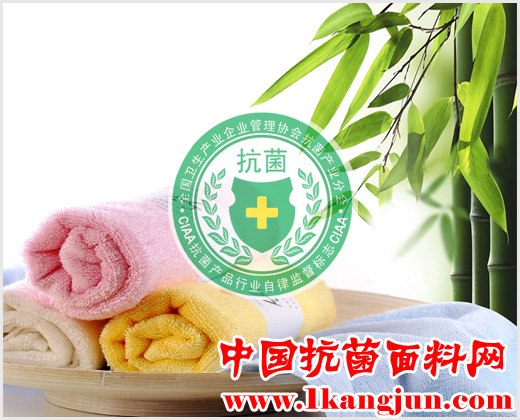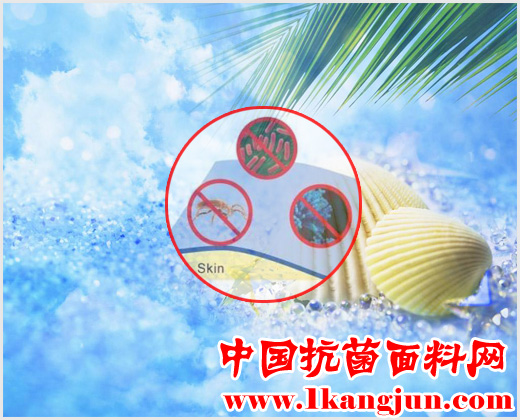Study on the levelness of chitin cotton blended fabric Black Sapphire Ingot,Green Sapphire Ingot,Blue Sapphire Stone,100Kg Sapphire Ingot ShanXiZhongJuJingKe Semiconductor Co., Ltd , https://www.sxzjjk.com Study on the levelness of chitin cotton blended fabric


Study on the levelness of chitin cotton blended fabric
Chitin is a biological resource with high content on the earth, second only to cellulose. The annual biosynthesis is as high as 10 billion tons, which can be biodegraded. The waste will not cause any pollution to the environment. Chitin fiber is extracted from marine shell crab and shrimp shells and is extracted by modern high-tech processing technology. It is the only positively charged cationic fiber in nature. Chitin fiber has the characteristics of biocompatibility, biodegradability, non-toxicity and good antibacterial properties, and has been used in the production of textile and garment industry and medical hygienic materials [1]. However, due to the high cost of chitin, the yarn is difficult to be purely spun. At present, most of the blending process is adopted, and the chitin short fiber is blended with other natural or recycled short fibers. Mixing a certain proportion of chitin fiber into the cotton fiber can improve the spinnability of the chitin fiber, reduce the cost of the chitin fiber, and improve the performance of the cotton fabric, and increase the health-care performance of antibacterial and deodorant. However, due to the difference in structure between cotton and chitin, the dye dyeing rate on the two fibers is different, which is easy to cause uneven dyeing, which greatly limits the application range of chitin/cotton blend fabric. In this paper, the aldehyde is used to protect the amino group on chitin and then dyed. After dyeing, the blended fabric is treated with dilute sulfuric acid to remove the protective group, thereby obtaining a blend fabric with higher levelness.
test
Test materials and equipment raw materials Chitin/cotton (5/95) (bleaching products, knitted fabrics) (Qingdao Zhifa Group), chitin fiber, chitin/cotton (12/88) (bleaching products, knitted fabrics) (Jinan Haida Biological Engineering Co., Ltd.). Reagent aldehyde (chemically pure), phosphoric acid (analytical grade) (Yantai Sanhe Chemical Reagent Co., Ltd.), concentrated sulfuric acid (analytical grade) (Yantai Sanhe Chemical Reagent Co., Ltd.), sodium chloride (analytical grade), trisodium phosphate ( Analytically pure), reactive dyes. Instrument HH digital display constant temperature water bath (Jintan Honghua Instrument Factory, Jiangsu Province), X-rite 8400 X-Rite Computer Color Matching Colorimeter, SW-8 Washing Color Fastness Tester (Wuxi Textile Machinery Company) , infrared spectrometer, UV-1700 UV spectrophotometer.
experiment method
Amino protection and removal process
After the blended fabric is boiled in water for 10-15 minutes, rinse it with water, then add excess aldehyde in the ventilated kitchen for 6-10 hours. After the reaction, remove the blended fabric and rinse off the excess aldehyde with dilute ethanol solution. 2], rinse with water to prepare for dyeing. The dyed and diluted boiled fabric is immersed in a dilute acid at 20-50 ° C for 10-30 minutes to remove the protecting group of the amino group.
Reactive dye dyeing process
Reactive dye dyeing process conditions [3][4] see Table 1 Table 1 Reactive dye dyeing process Dyeing dyeing temperature and time / ° C × min dielectric amount / gl-1 fixing alkali agent dosage / gl-1 fixing color temperature and time / °C×min Reactive Blue X-BR 25×30 Nacl/20 15 40×30 Active Cuilan KN-G 60×30 Yuan Mingfen/60 6 60×30 Reactive Brilliant Blue KN-R 60×30 Yuan Mingfen/60 6 60×30 Reactive Red K-2G 90×30 Nacl/20 15 90×30 Active M-5R 60×30 Nacl/60 15 60×30 Note: The dye bath ratio is 1:60, and the dye weight is 1% for the fabric. After dyeing, it was washed with water, and boiled with 2 g/l of soap powder at 95 ° C for 10 minutes, and washed with water for use. The fixing alkali agent is selected from trisodium phosphate.
Drawing of the dyeing rate curve
The maximum absorption wavelength of the dyeing solution at different dyeing times was measured by an ultraviolet spectrophotometer, and the absorbance A of each dye solution was measured by the maximum absorption wavelength, and the percentage of adsorption of the dye was calculated by the formula: % adsorption ratio = (1-Ai/A0) × 100 %, Ai----the absorbance of the dye solution A0----the absorbance of the blank dye bath
Determination of the levelness of fabrics
The apparent depth K/S value was measured at the maximum absorption wavelength λmax at 8 points on the fabric, and then the average value and the standard deviation Sr were calculated to express the levelness of the dyed fabric. The smaller the standard deviation, the better the levelness. K/S value test method [5]: Tested on the X-rite 8400 X-Rite computer color measurement and color matching instrument. The test uses D65 light source and the observation angle is 10°. Its size is expressed by the Kubelka-Munk formula, ie K/S = (1-R) ​​2/2R, where R is the reflectance at the maximum absorption wavelength. Correlation formula: ( ) Σ==nii KSnK S1/ 1 /( )11//12??????? ?=Σ=nK SK SSrnii where n is the number of measurement points.
Wash fastness test
The color fastness to washing is determined according to GB 3921. 3-1997 "Washfastness of Textiles: Test 4", and the fading and staining fastness grades are evaluated;
Results and discussion
The effect of different aldehyde-protected amino groups on the leveling effect was to protect the amino groups with different aldehydes, then dyed with reactive dyes by the same dyeing process, acid-treated to Schiff base, test the K/S value of the blended fabric and calculate the Sr values. The effect of protecting aldehyde on levelness is shown in Table 2. Table 2 Sr value obtained by dyeing amino groups with different aldehydes. Fabric acetaldehyde salicylaldehyde glutaraldehyde glyoxal unprotected chitin/cotton (5/95) 0.025 0.023 0.070 0.088 0.064 chitin/cotton (12/88) 0.028 0.025 0.077 0.086 0.070 In Table 2, the fabric dyed with salicylaldehyde has a marked improvement in levelness compared to unprotected fabrics. While diglutaraldehyde and glyoxal form a yellow hard-to-remove material on the fabric, it may be that the cross-linking of polyaldehydes with cotton is not suitable for the present method. Considering this test, salicylaldehyde is used as a protective reagent.
Infrared spectroscopy
The infrared spectrum of pure chitin fiber and salicylaldehyde-protected modified chitin fiber was determined by KBr tableting method. The results can be seen from Fig. 2, and a new absorption peak and Schiff base appeared at 1629.7 cm-1. The characteristic absorption peak of C=N shows a characteristic absorption peak of the benzene ring skeleton at 1600 cm-1 and 1155 cm-1. The comparison with the infrared spectrum of chitin in Fig. 1 indicates that the above new peak is caused by a new bond generated by the reaction of aldehyde and chitin with Schiff base, so it can be judged that the amino group of chitin has been graft protected by aldehyde.
Effect of acid on the removal of Schiff base protecting groups The results of removing the amino protecting groups under different conditions are shown in Table 3. Table 3 Results of removal of protecting groups under different conditions The concentration of acid species g/l Temperature / °C Time / min Phenomenon 3 40 20 The fiber debris appeared in the solution, the solution became cloudy and colored, and finally the clarification can be seen from Table 3. Sulfuric acid has a good destructive effect on Schiff base, and basically meets the test requirements. To prevent the effect of acid on cotton performance, the acid concentration and reaction temperature should be strictly controlled. Phosphoric acid can also remove Schiff base, but phosphoric acid has a strong degradation effect on chitin fiber. The fiber debris appearing in solution is the role of phosphoric acid degradation, so phosphate can not be used as a protective group remover. After the pure chitin fiber was protected by salicylaldehyde, it was treated with 3 g/l sulfuric acid at 40 ° C for 20 minutes, and then the infrared spectrum was measured by KBr tableting method. The results are shown in Fig. 4. Fig. 4 Infrared spectrum of chitin after removal of Schiff base. It can be seen from Fig. 4 that the infrared spectrum of chitin after removing Schiff base with sulfuric acid has little change compared with Fig. 1, which indicates that the Schiff base is completely Take off.
Effect of modification on leveling effect
After modification with salicylaldehyde, the fabric was dyed with different reactive dyes and its Sr value is shown in Table 4. The blended fabric was protected with salicylaldehyde. After dyeing with reactive dyes, the K/S values ​​of different fabrics were measured after removing the protecting groups with dilute sulfuric acid, and the Sr value was calculated. It can be seen from Table 4 that the salinity of the blended fabric treated with salicylaldehyde is obviously improved, and basically meets the needs of dyeing and finishing. At the same time, it was found that the dyeing properties of the dyes obtained by dyeing X, KN and M reactive dyes were better, and the dyeing fabrics dyed with K-type reactive dyes had poor leveling properties. This may be due to the higher dyeing temperature resulting in a large difference in the rate of modified chitin and cotton absorbing dye. Table 4 Sr value of different fabrics after dyeing of reactive dyes. Blue X-BR activity Cuilan KN-G active Yanlan KN-R active yellow M-5R active red K-2G chitin/cotton (5/95) 0.060 0.044 0.056 0.061 0.083 Modified Chitin/Cotton (5/95) 0.021 0.018 0.030 0.020 0.065 Chitin/Cotton (12/88) 0.082 0.068 0.077 0.086 0.142 Modified Chitin/Cotton (12/88) 0.029 0.025 0.034 0.026 0.
Chitin/cotton blend fabric index detection
After the blended fabric was boiled for 10 minutes in water, an excess of salicylaldehyde was added to react at room temperature for 10 hours, and dyed with active blue X-BR according to the 1.2.2 reactive dye dyeing process. After dyeing, it was soaked with 3 g/l of sulfuric acid at 40 ° C. After 20 minutes, test the indicators of the finished product. The properties of the dyed leveling and color fastness of the finished product were tested as shown in Table 5. Table 5 Dyeing fabric index detection of rubbing fastness Fabric leveling property (Sr) Washing fastness Dry rubbing antibacterial rate /% modified chitin/cotton (5/95) 0.019 4~5 4~5 4~5 80 Modified chitin/cotton (12/88) 0.022 4~5 4~5 4~
in conclusion
(1) The chitin/cotton blend fabric modified with salicylaldehyde has a significant improvement in the dyeing level of low-temperature and medium-temperature reactive dyes, but the improvement of high-temperature reactive dyes is not satisfactory.
(2) The best process for the modification of chitin/cotton blend fabric and the removal of protective groups is: swell the fabric at 95 ° C for 10 min, then add excess salicylaldehyde for 10 hours, fully wash, and wash with water after dyeing with reactive dyes. It was treated with 3 g/l sulfuric acid at 40 ° C for 20 min, and finally washed with water.
ZeroClipboard.setMoviePath('/plugin/copytofriends/ZeroClipboard.swf'); var clip = new ZeroClipboard.Client(); clip.setHandCursor(true); clip.setText(" Chitin cotton blend fabric leveling study http:/ /"); clip.addEventListener('complete', function(client,text){ alert("Successfully copy this article to the clipboard!"); }); clip.glue('copytofriends ');